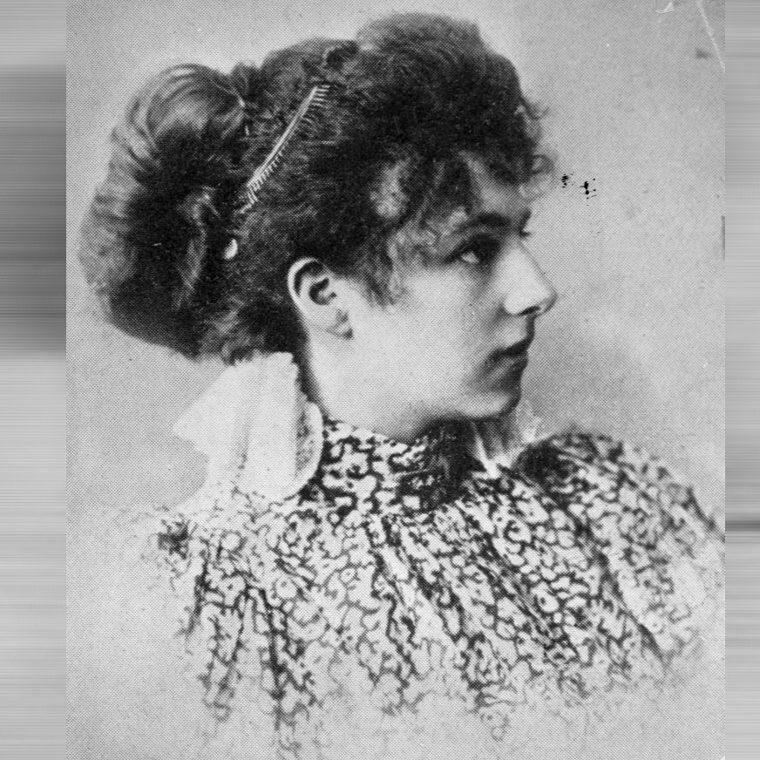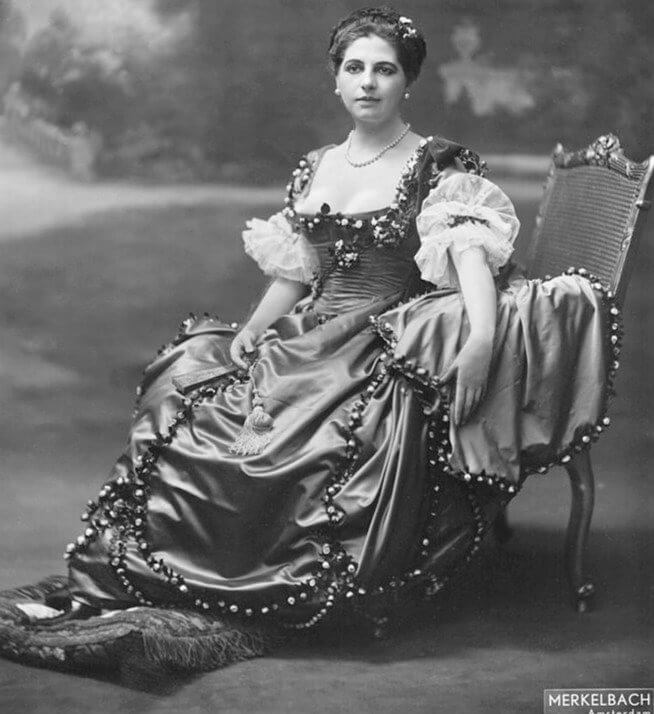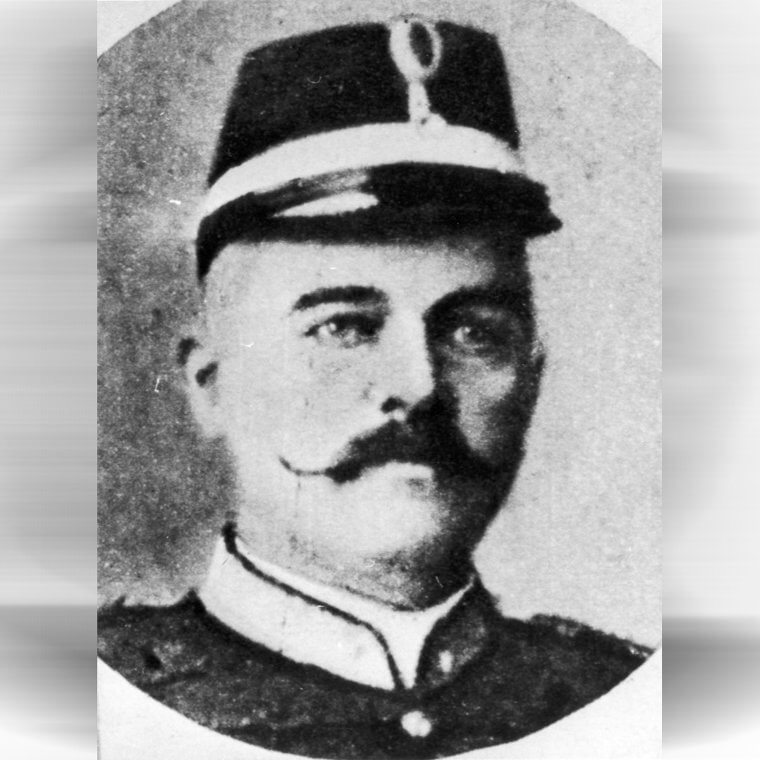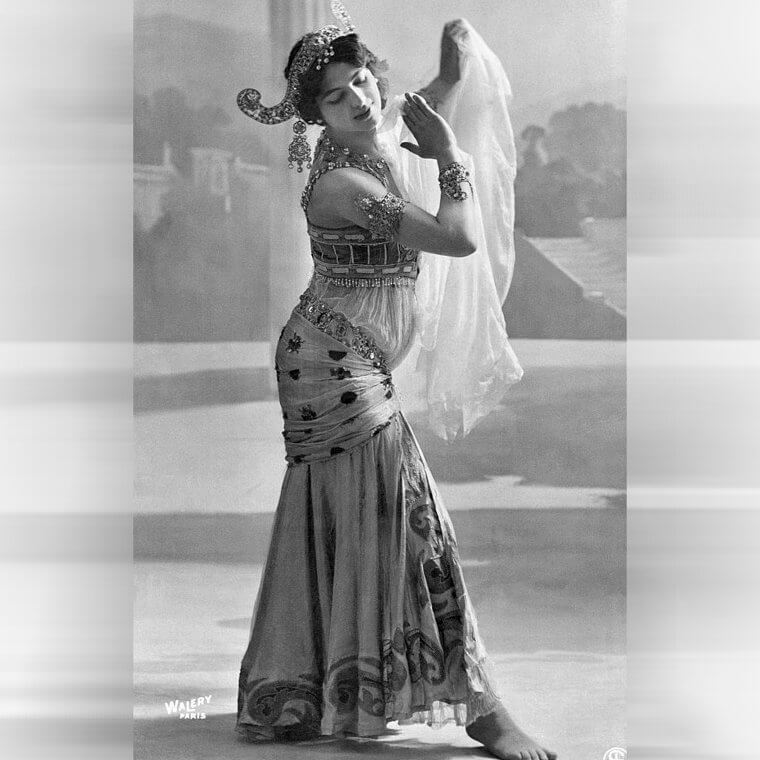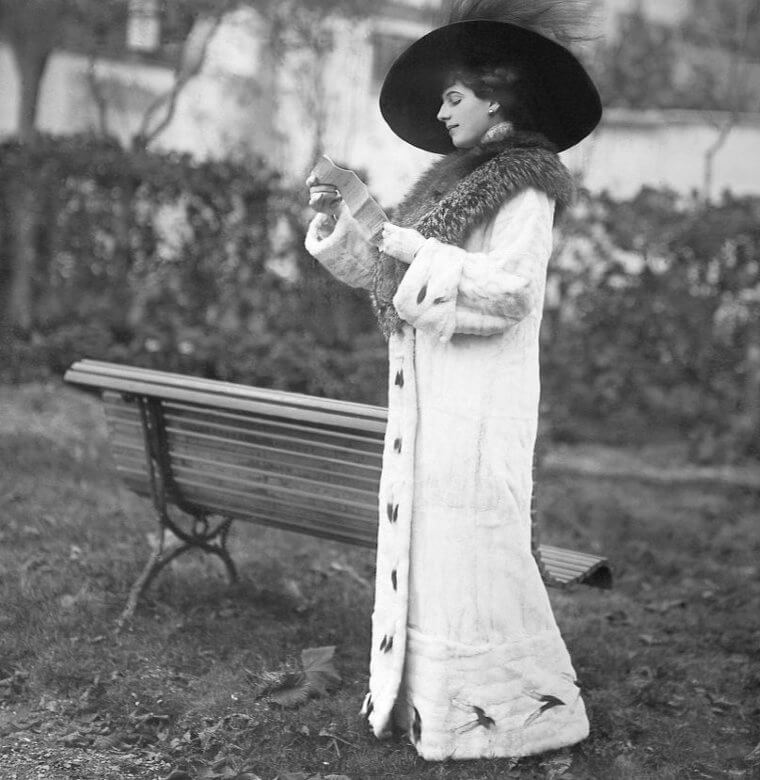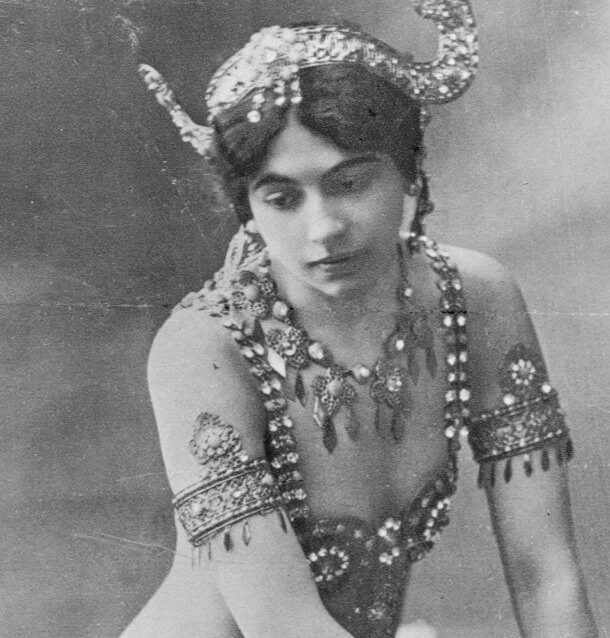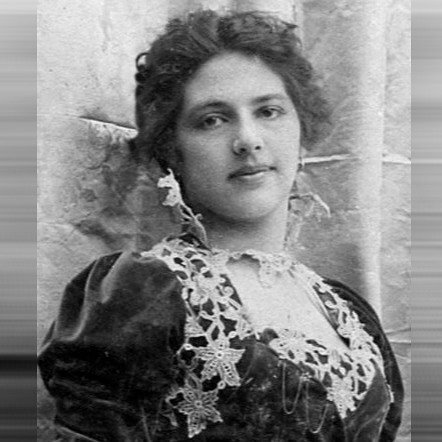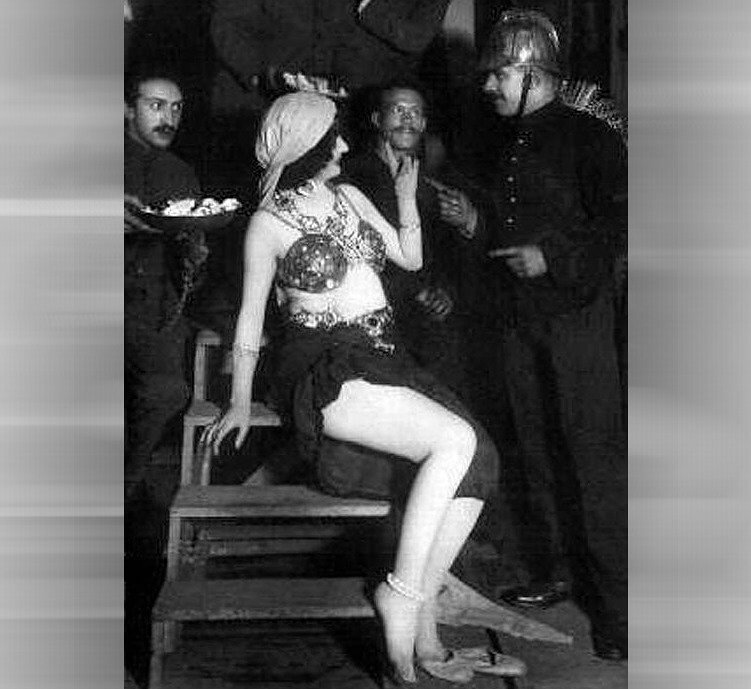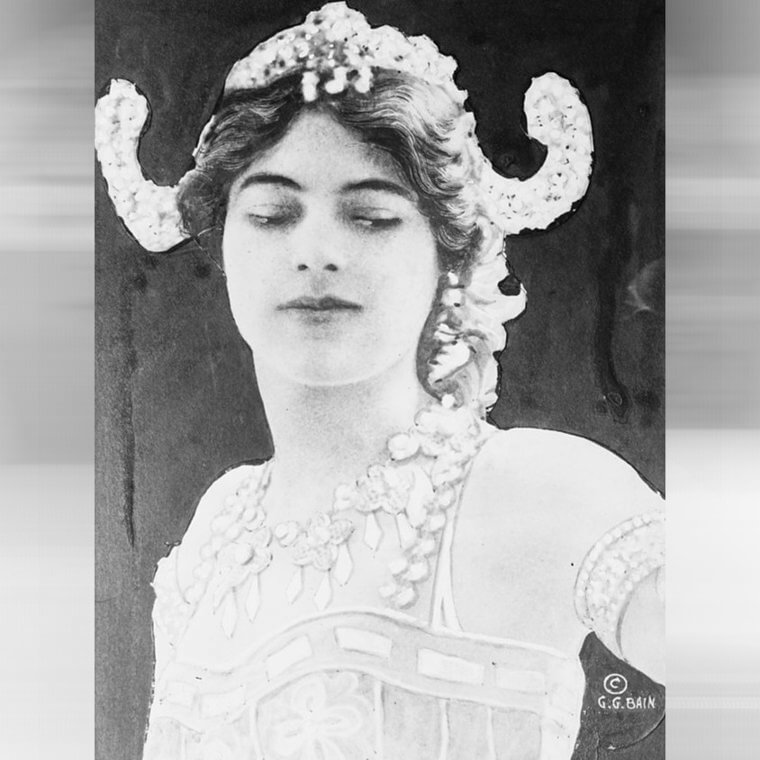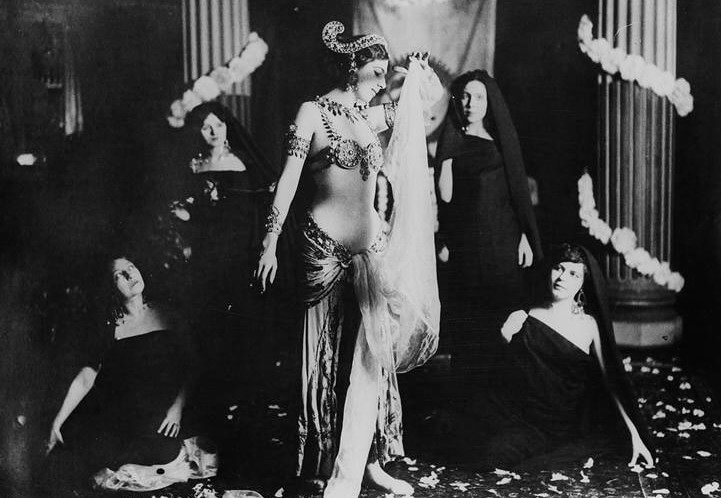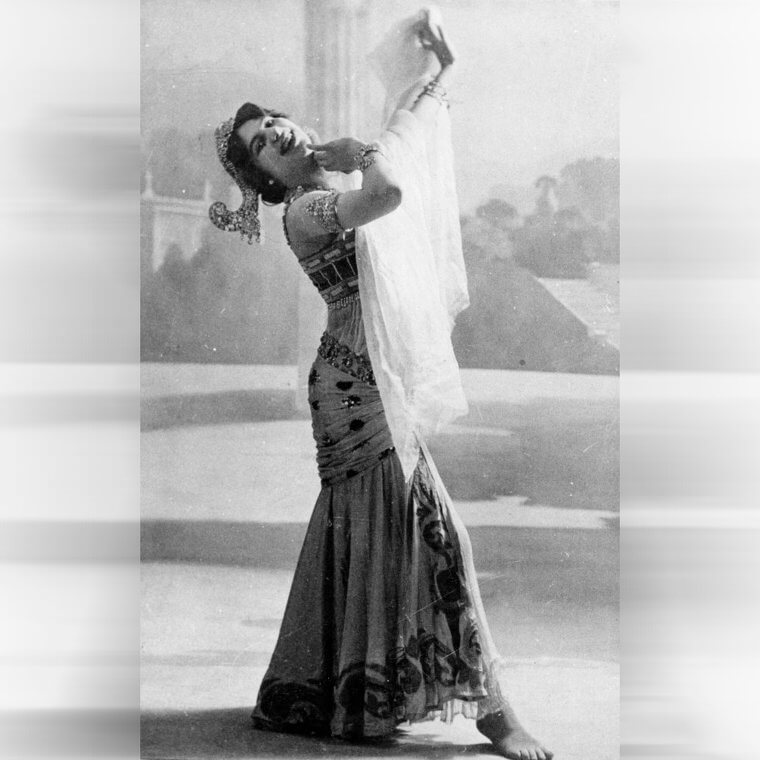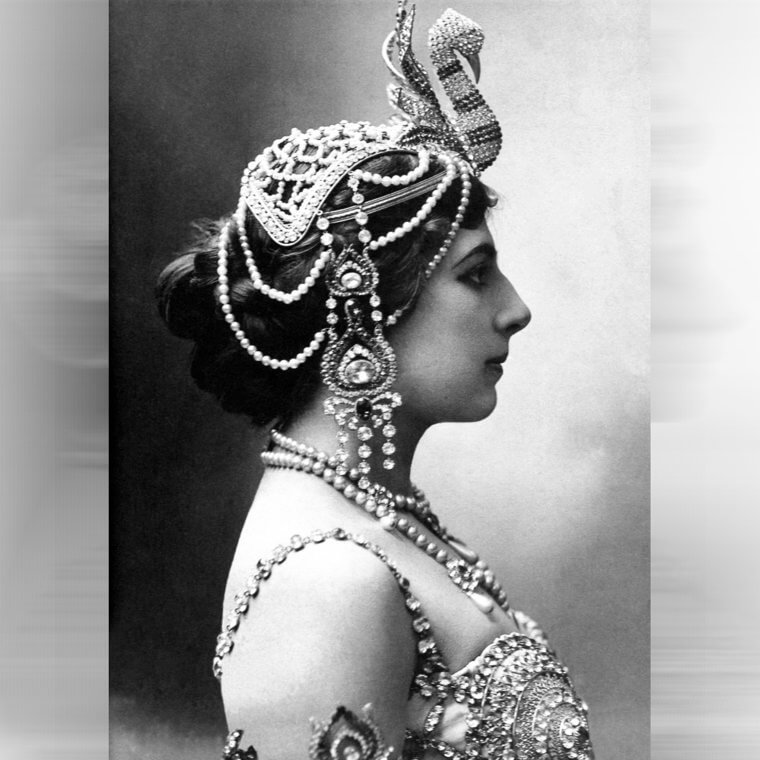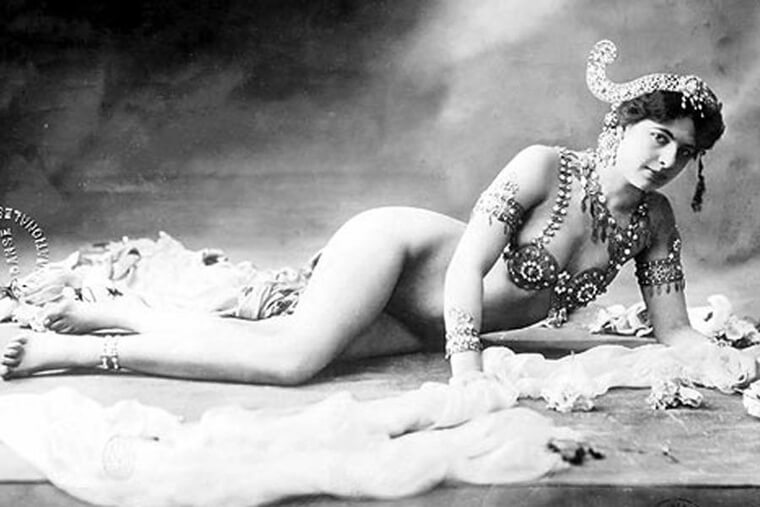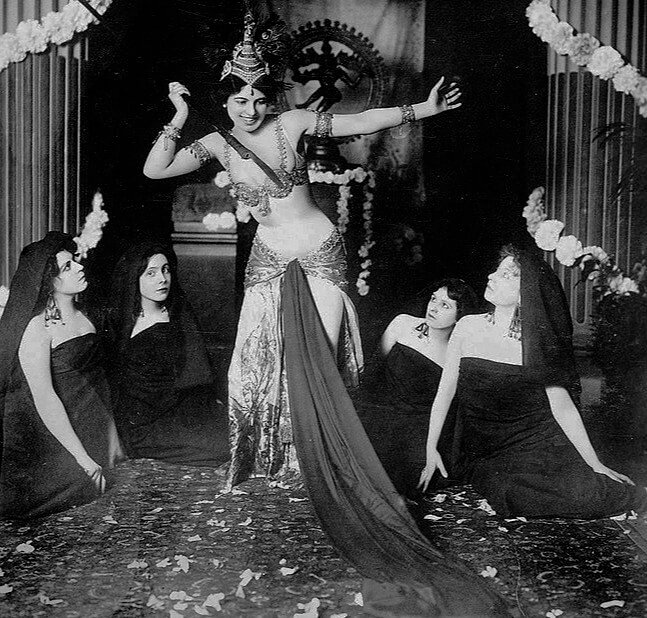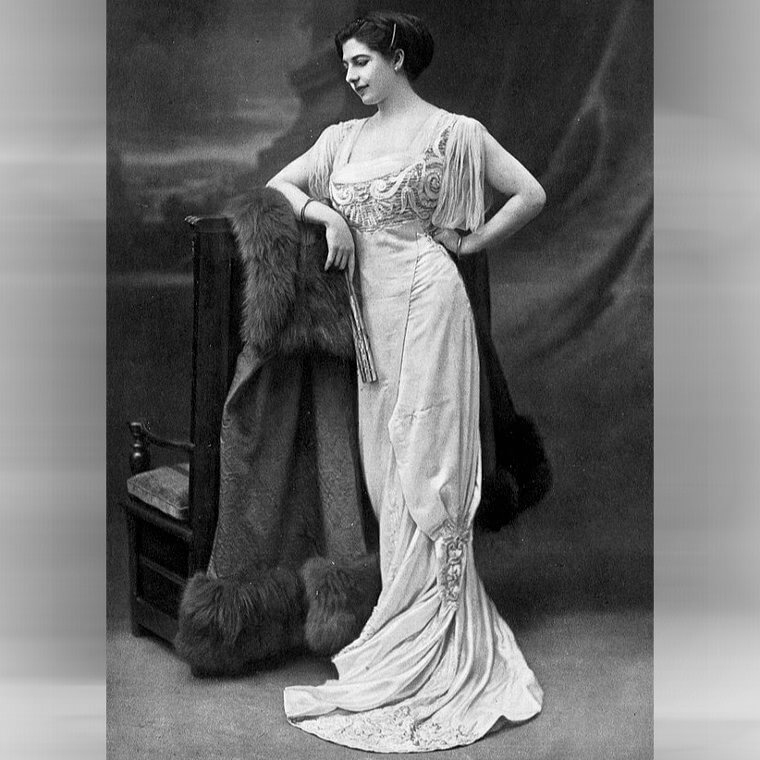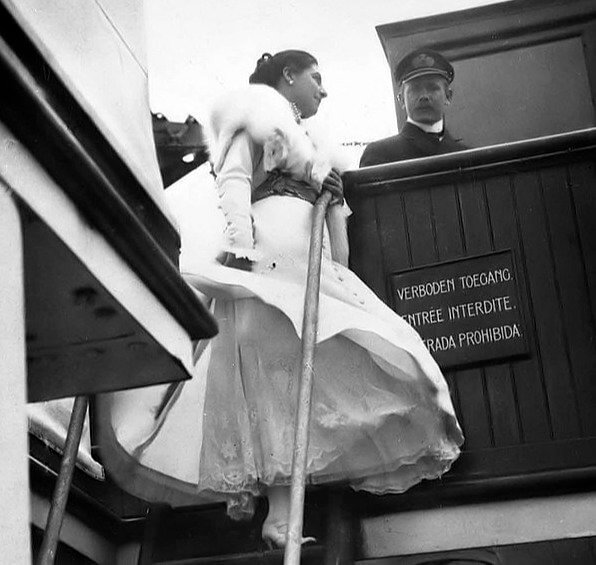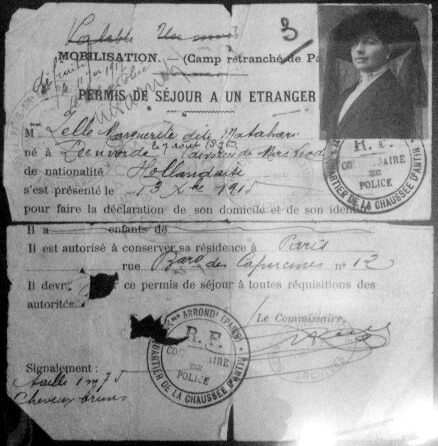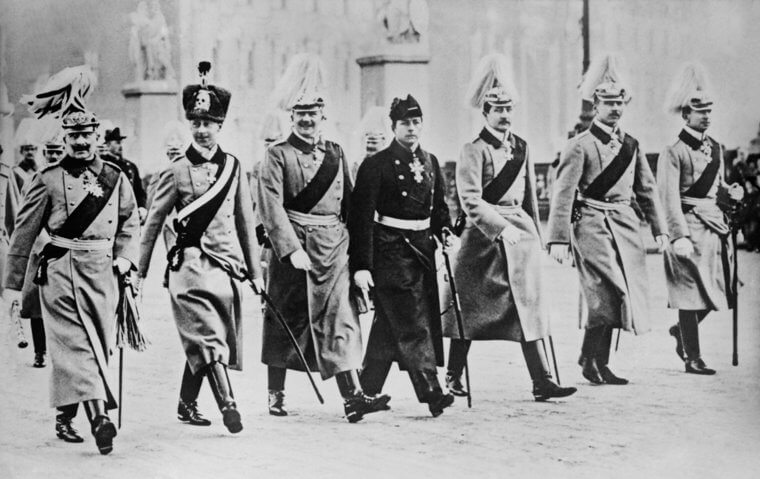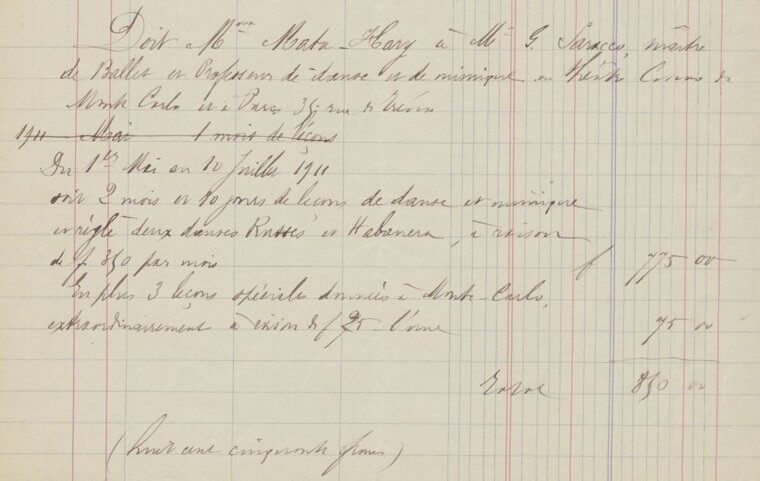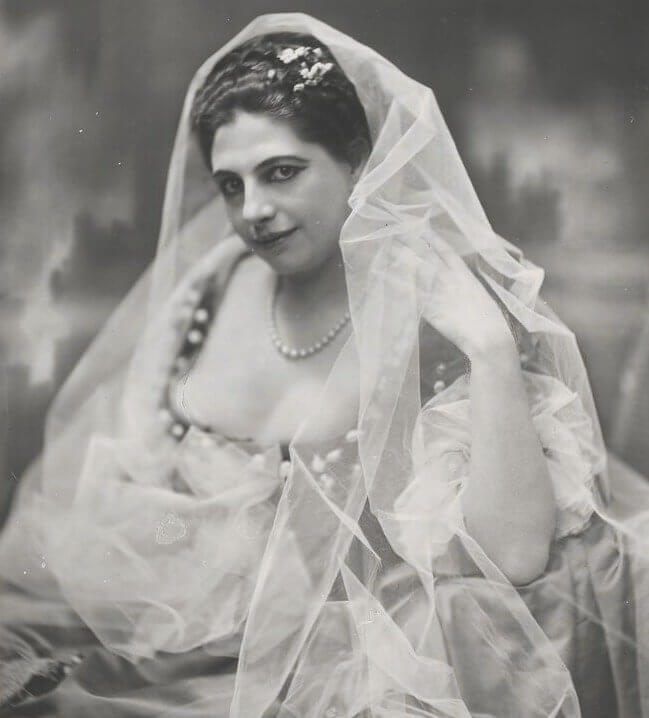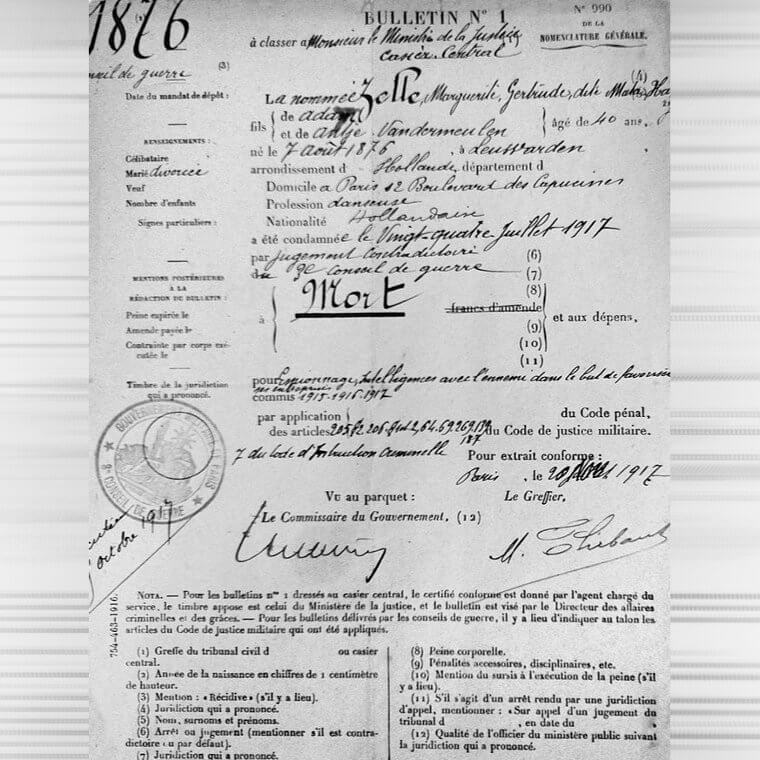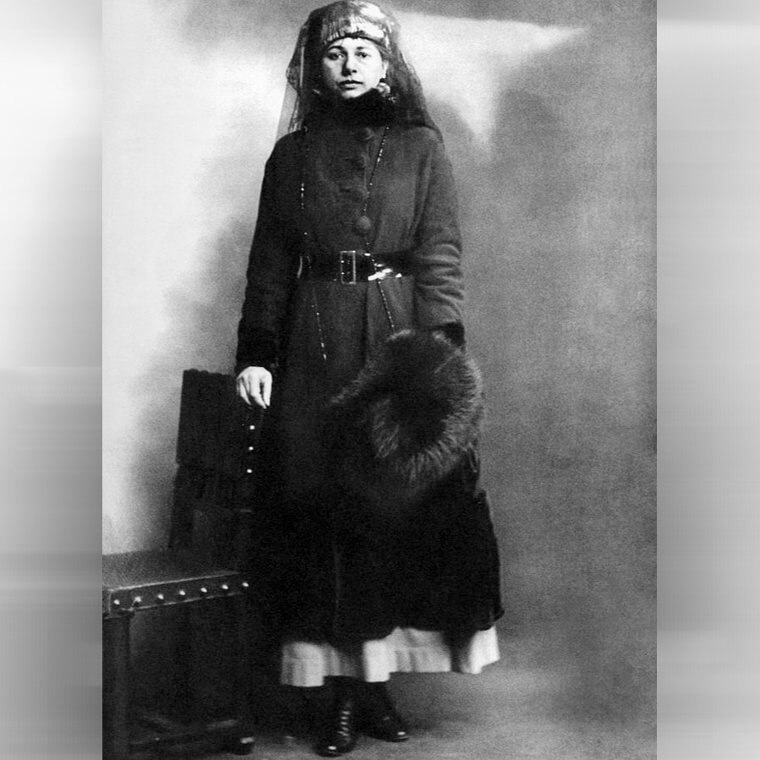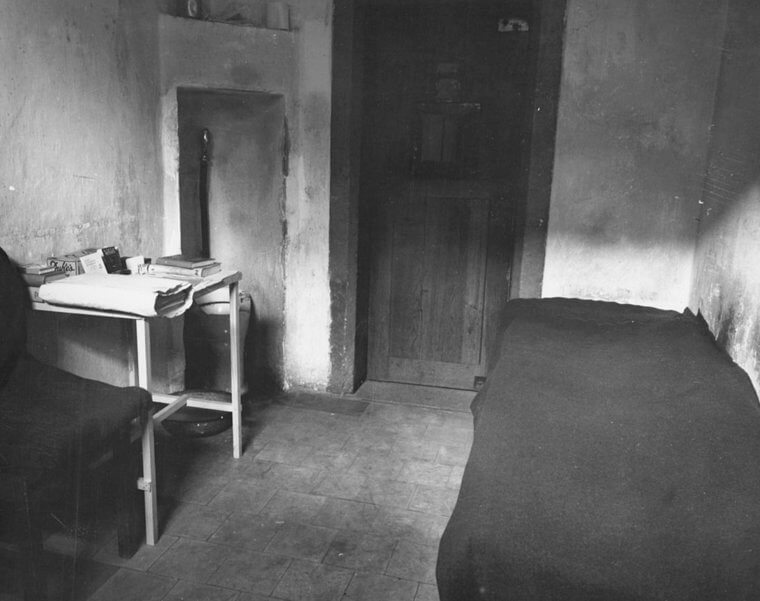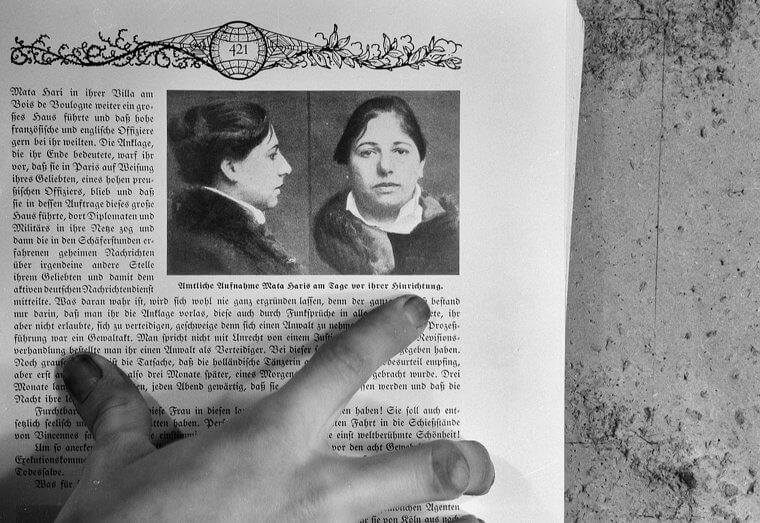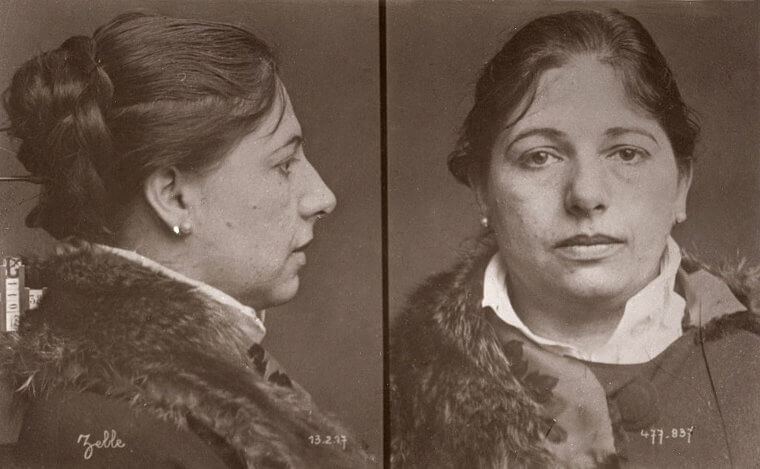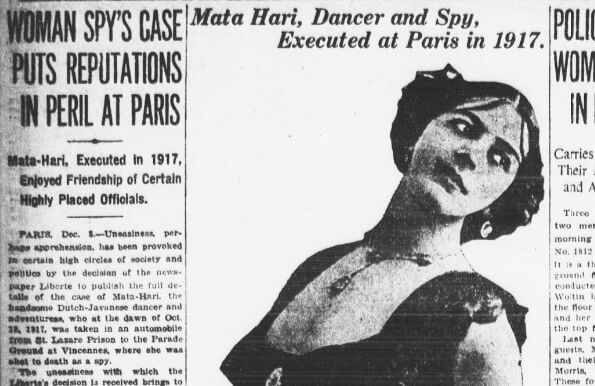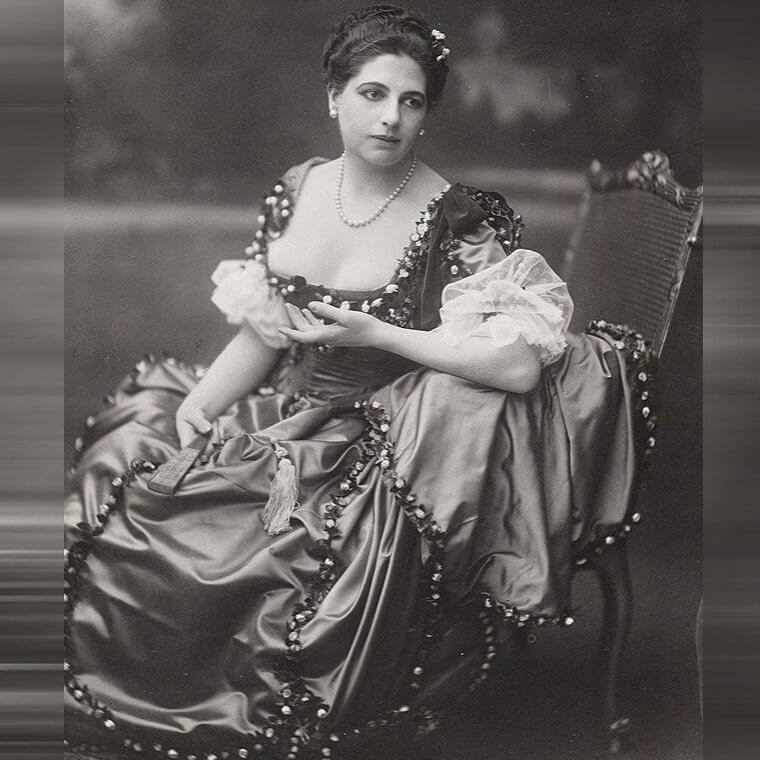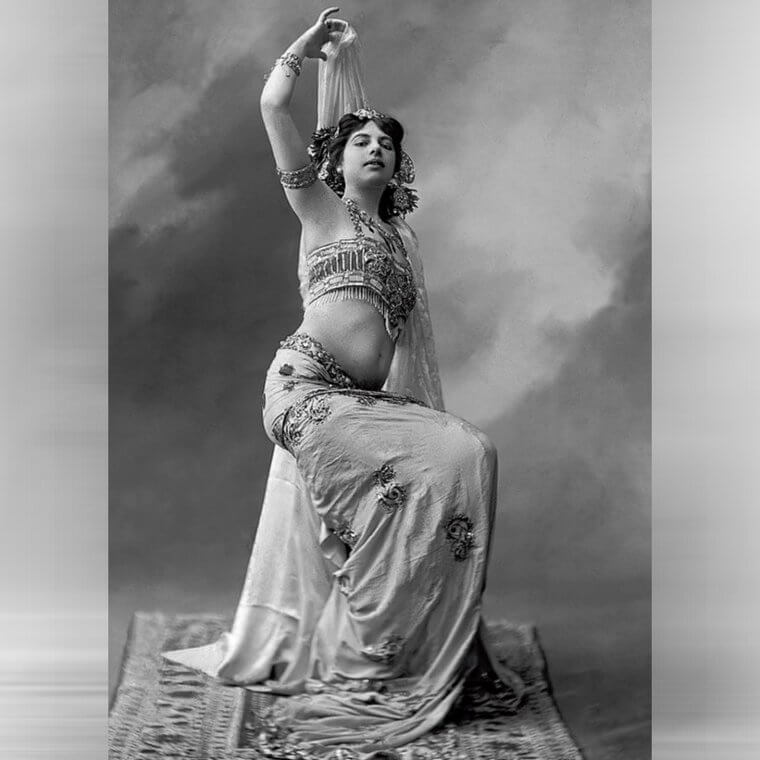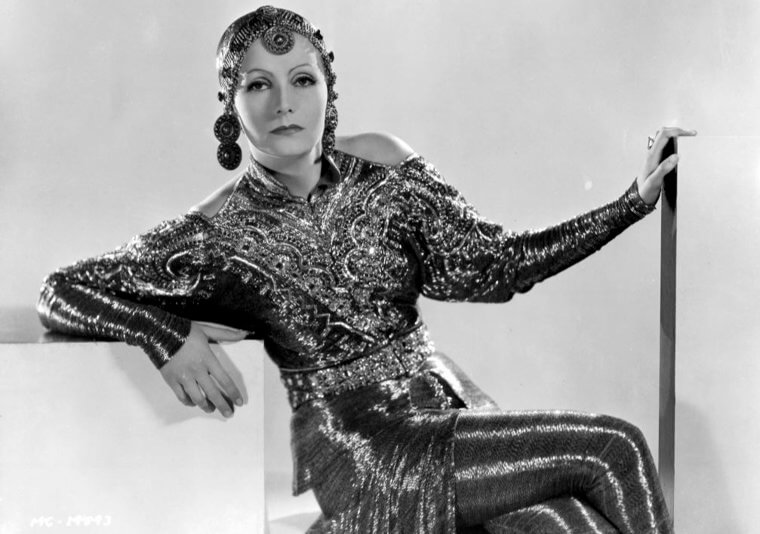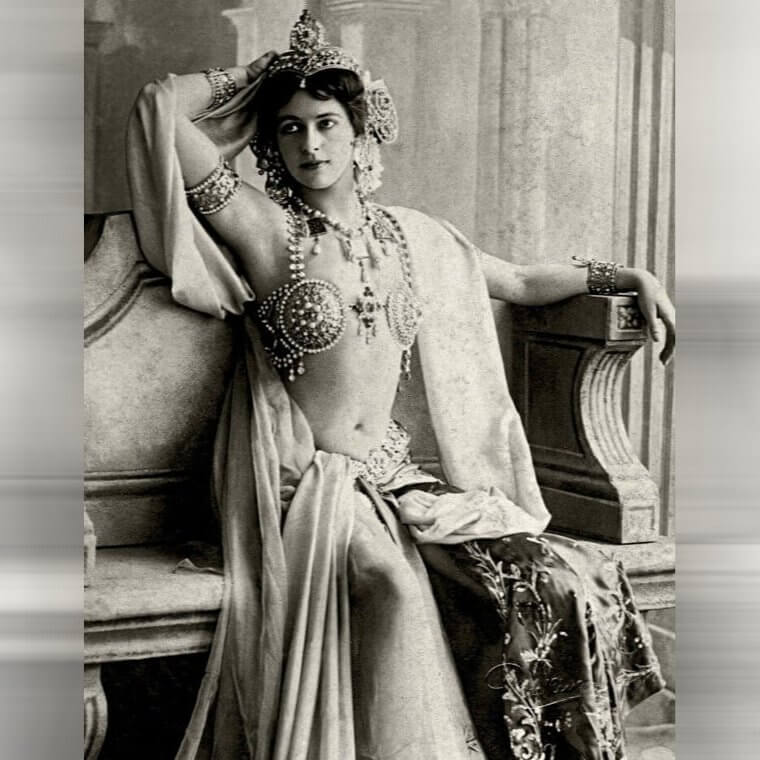A Humble Beginning
Today, Mata Hari's name is associated with recklessness and deceit. But before she became one of the world's most wanted women, she was just a normal child living a very humble life in the Netherlands. But what you might not realize is that she wasn't always Mata Hari. She was born Margaretha Zelle on August 7, 1876, in the city of Leeuwarden, and she spent the first few years of her life with her parents and her three brothers.
As she got older, Margaretha's life began to change. Her father successfully invested his money into the oil business, and before too long the whole family was living the high life. But we all know that money can be fickle.
A Family Torn Apart
Just as quickly as the family came into money, that wealth was then taken away from them when her father's investments turned upside down. And while Margaretha had grown used to private school and fancy clothes, she had to give everything up overnight. In fact, the family was thrown into the depths of bankruptcy, and this ultimately put such a strain on her parents' marriage that they decided to call it quits.
Margaretha suffered an even bigger heartbreak in 1891 when her mother sadly passed away. And while her father remarried, she struggled to form a connection with her new step-mother. So, she went to live with her godfather.
Catching the Attention of Men
Moving away from her father forced Margaretha to grow up quickly, and she soon found herself a job as a kindergarten teacher. But despite her young age, she also started to catch the attention of men - and this proved to be a problem when the headmaster of her school started to become inappropriate. She was just 17 years old at the time and knew what he was doing was wrong, so she left her job in search of something new.
That something came when Margaretha answered the advert of Rudolf MacLeod, a 38-year-old Dutch Colonial Captain who was looking for a woman to call his wife. And when she was just 18 years old, she got married.
A Bad Start
Unfortunately, their marriage got off to a bad start. Although Margaretha wanted MacLeod to be a good and kind man, that wasn't the case. He forced her to move to the Dutch East Indies (which is called Indonesia today), and he spent most of his time drinking and taking his aggression out on her. He found joy in spitting in her face, using belittling language, and threatening his wife with violence.
To make matters even worse, Margaretha soon cottoned on to the fact that she wasn't the only woman in his life. He also had many mistresses that he failed to keep secret, and she felt defeated.
Finding an Escape
In a new country with no friends, Margaretha knew her options were limited. But she felt hope for the first time when she met Van Rheedes, another Dutch officer who showed her love and compassion. And during a brief stint away from her husband, she was encouraged to pursue new paths and new interests. In doing this, she fell in love with Hinduism and Indonesian dance, and ultimately changed her name to Mata Hari.
However, MacLeod wouldn't let his wife go easily. And after pleading for her to return to him, Mata decided to give her husband a second chance. Unfortunately, she soon realized her trust was misplaced.
Married to a Monster
Within days of returning to her husband, she realized that nothing had changed. If anything, he was more violent than ever, and she could see that MacLeod had turned into a monster. On one occasion, he even tried to end her life with a knife - but she was ultimately saved when a chair fell over in the room and gave her a chance to escape his violent and ugly wrath.
This continued over the course of their marriage, but Mata found strength in the two children they brought into the world; Norman John and Louise Jeanne. More than anything, Mata wanted to stay strong for her children - but something terrible happened in 1899.
Saying Goodbye
In a mysterious turn of events, both Norman and Louise became incredibly ill in 1899. Tragically, two-year-old Norman died as a result - and both Mata and MacLeod were quick to blame their nanny for the death of their son. However, historians familiar with the story of Mata and MacLeod don't believe their nanny had anything to do with his death. Instead, they think that MacLeod was the reason their children became ill.
In fact, it's reported that MacLeod's philanderous ways resulted in syphilis, something that he then passed onto his wife and subsequently passed on to their children. However, historians believe it was the after-effects of this diagnosis that ultimately ended Norman's life.
They Lost Their Daughter, Too
Yes, it's widely regarded that both Mata and MacLeod knew that their children had been infected with the disease - and it's believed that they did everything they could to curb the symptoms. This involved home remedies and untested treatment, and it's suggested that these decisions ultimately led to Norman's demise. Not only that, but Louise also passed away when she was 21 years old of similar symptoms to her brother.
Although questions surrounding their deaths will never be answered, historians believe that Mata was so riddled with guilt that she was never the same after that moment. Perhaps that's why she subsequently made such terrible decisions.
A Bitter Battle
After the death of their son, Mata and MacLeod decided to move from Java back to their home country, the Netherlands. And while Mata hoped their experience would force her husband to take a long, hard look at himself, it just made him worse. He became so violent that she knew she had no option but to divorce him - but this process wasn't easy. In 1902, women were the underdogs, especially in front of a judge.
Although Mata filed to divorce her husband and told the judge of MacLeod's terrible treatment of her, her husband ultimately had the upper hand during their divorce. And when he told the judge to dismiss the divorce proceedings, that's exactly what he did.
Taking Her Down
In the end, it took Mata four long years to get the judge to listen to her pleas for divorce. But even after their divorce was finalized, MacLeod made it his mission to take her down. He spread unkind and false rumours about her, he convinced potential employers to avoid hiring her, and he tried to keep their daughter away from her. However, the courts ruled in her favour and Mata was ultimately given full custody of Louise.
When the judge made his decision, MacLeod decided to cut Mata and their daughter off completely. And as he refused to pay child support, Mata was left as a single mother with no money, no job, and no prospects.
Making a Tough Choice
Although MacLeod still saw Louise on occasion, Mata hated the fact that her daughter was being exposed to such a horrible man. However, she was struggling beyond belief. When she realized that Louise was well-fed, had clothes that fit her, and had a warm bed to sleep in when she visited her father, Mata knew that she had to make a tough decision. And in the end, she decided to hand over custody of Louise to her ex-husband until she was able to get herself a stable job.
Mata knew she wouldn't be able to get a job in the Netherlands, so she moved to Paris in search of new opportunities. Over the years, she worked as a German language teacher, piano teacher, and even as a servant. But none of them paid well - so she became a semi-nude model in the circus, instead.
Lady MacLeod
Mata dreamed of making a living using her love of Indonesian culture and dancing, but working as a semi-nude model paid fairly well - and she didn't want to give it up to go back to nothing. However, she didn't feel comfortable using her 'Mata Hari' name while working in the circus, so she went by the name of 'Lady MacLeod' instead. Of course, this didn't go down well with her ex-husband when he found out that she was using his name.
Unfortunately, this job still didn't pay enough for her to get by, which meant that she had to resort to other means. And it during this time of her life that she decided to start selling her body.
At Rock Bottom
At the back of her mind, Mata Hari knew that everything she was doing was for the greater good. She wanted nothing more than to get her daughter back in her arms, and she knew that having money was the only way to do that. Nevertheless, she struggled with her choices and knew that she had hit rock bottom. In one letter to her family, Mata even hinted towards the possibility of taking her own life.
Thankfully, the tides changed for Mata before she harmed herself. With the help of a booking agent by the name of Gabriel Astruc, she was able to make a name for herself as Mata Hari, the exotic dancer.
Standing Out From the Crowd
As soon as she entered the Parisian dance world, Mata stood out from the crowd. While there were many exotic dancers dancing in clubs in the city, there were none quite like Mata. She was seductive, she was different, and she was cultural. In fact, she even created a persona for herself, and performed every dance as though she was a Hindu princess who had lost her way and found herself in Paris.
Of course, what her fans loved more than most was the fact that she would start her routines covered in long and glowing fabrics. But as the dance wore on, she removed these fabrics to reveal jeweled undergarments and a stunning headdress.
Keeping Tabs on Her
On stage, Mata Hari was a confident seductress who impressed all who laid eyes on her. But behind closed doors, she was incredibly self-conscious and refused to show her bare breasts to her customers. And while this left everyone wanting more, what she didn't realize was that this was one of the best decisions she had ever made. After all, her ex-husband was still keeping tabs on her and was still trying to take her down.
When he discovered that she was an exotic dancer, he even took pictures of her to the judge in an attempt to ruin her reputation for good. However, his efforts were fruitless, as Mata was on the up.
A Popular Woman
Although MacLeod was doing everything to pull her down, Mata's popularity only grew - so much so that her clients became richer and more important than her ex-husband. And while she was primarily an exotic dancer, she also dabbled in the world of high-society escorting. This allowed her to get even closer to some of the biggest names in the well-to-do world, including a German businessman by the name of Herr Kepert.
After a year of dating, the couple called it quits. But it didn't take Mata long to find her next suitor, and that came in the form of a millionaire industrialist, Émile Étienne Guime. But while her men kept her busy, Mata was still struggling.
Missing Her Daughter
On the one hand, Mata loved the fact that she was making money and dancing for a living. But on the other hand, she was miles away from her daughter, and she missed her more than anything. And while she tried to keep in contact with Louise, her ex-husband made this impossible. Every time she tried to write letters to Louise, they would just be returned to her, clearly unopened.
Before too long, her sadness began to show on stage, and the sparkle that surrounded the star began to fade. And almost as soon as her career had taken off, it also started to stumble.
Dealing With Critics
By the time 1910 came around, the buzz around Mata Hari had all but come to an end. Those who once loved her exotic dancing and revealing outfits were suddenly berating her for her nudity and accusing her of exploiting her body to get attention, and she had to deal with a barrage of critics. Of course, the fact that she was also much older than some of the newcomers on the scene also didn't help her reputation.
As Mata faced rejection as a dancer for the first time in her career, she could sense that her stint in the limelight was coming to an end. So, she needed to find something else to do.
Hanging up Her Headdress
Although Mata battled on for another five years, by 1915, she knew she had no choice but to retire. What once made her so famous and popular had become overused in the world of exotic dancing, and she was no longer as unique as she was once. Hanging up her headdress for good wasn't a decision she took lightly, though. She wanted to ensure that she had another job in the pipeline before retiring from dancing.
In the end, it was an easy career move for Mata. As she already had so many high-class fans, becoming a Courtesan felt like the next natural step. So, she began to travel the world with her many rich customers.
A Poor Decision
Although Mata loved the thrill of seeing new places and enjoying the company of rich men, what she didn't realize at the time was that this decision would ultimately cost her her life. After all, schmoozing with some of the most powerful men in the world during such a turbulent time in history is never going to end well - and Mata realized that for herself. And the beginning of the end began in 1916, as the world battled in World War I.
Despite the tragedy happening around her, Mata tried to keep her life as normal as possible. But things turned upside down when she fell in love with a man much younger than her.
An Offer She Couldn't Refuse
Captain Vadim Maslov was 20 years younger than her, but that didn't stop Mata from falling head over heels for him. When she discovered that he had been injured on the Western Front, she wanted nothing more than to travel to Germany and take care of him. However, her Dutch nationality meant that entering Germany wasn't an option - and a French intelligence officer took this as his opportunity to use Mata to his advantage.
George Ladoux offered Mata a free passage into Germany to see the love of her life in return for her extracting information from the Crown Prince of Germany, one of her old clients. Blinded by love, she took him up on his offer.
There's a Chance She Became a Double-Agent
Mata would have done anything to be by Maslov's side, but what she didn't realize was that she was barking up the wrong tree from the beginning. Ladoux had wrongly assumed that the Crown Prince had been part of the war efforts and plans because he had been used by name and picture in a huge amount of German propaganda. However, it turned out that he was simply a poster boy, and was not privy to any inside information.
Mata was none the wiser, though, so she went about her mission to extract information. However, many historians believe that Mata informed the Crown Prince of her plans, essentially becoming a double-agent in the process.
The French Find Out
Although the history books don't know exactly what happened next, one thing we do know is that Mata did indeed become a spy. But whether she was loyal to Ladoux or whether she pledged her allegiance to the Crown Prince instead is still unknown. However, it didn't matter whether she chose to betray France or not. When French officials learned of her actions, they weren't happy with her at all.
In fact, they believed her to be a danger to society - and her actions ultimately had devastating consequences that lost her her life. But how did they find out?
The Cover Is Blown
Although a physical war happening between France and Germany, a smarter war was happening behind the scenes - and intelligence officers on both sides worked hard to decode enemy messages. It was during one interception that French officials uncovered and decoded messages about a French spy they called H-21. But while the encrypted message didn't give the name of the spy, it did give a very detailed description of what the spy looked like and her work.
It didn't take long for the officials to work out that Mata Hari was the spy, which has led many historians to believe that the Germans didn't try to hide her identity at all. So, they may have set her up.
No Useful Information
It's believed that when German intelligence officers realized that Mata Hari had no useful information to share with them, they wanted to cut all ties with her. The best way to do that? Reveal her as a spy to the French. After all, she had already caused the Germans a huge amount of trouble during her time as a spy. For starters, Ladoux would often receive unencrypted messages from Hari that could have easily been intercepted by the enemy.
Not only that, but Mata also admitted she was a spy to British intelligence officers when she was captured. And with such high stakes, it seems as though the Germans couldn't take on such a liability.
Put on Trial
With evidence to suggest that she was a spy, the French authorities decided to follow procedure and put the spy on trial for her crimes. And while she wasn't the best at espionage, the judge revealed during the proceedings that her information and her actions had ultimately caused the demise of 50,000 people - and Mata was outraged. She knew she had done some bad things in her life, but she had never killed anyone.
To make matters worse, the love of her life Vadim Maslov was furious when he learned of Mata's choices. He refused to testify for her as a character witness, and instead cut her out of his life completely.
No Real Evidence
In today's day and age, there needs to be indisputable evidence that someone has committed a crime before they are charged as guilty. However, that wasn't the case back in the day. Although there were hints and hearsay that Mata had indeed been a spy, there was no physical evidence to suggest that she had committed treason in any way. All the judge had to go on was rumours, and her previous relationship with the German man Herr Kepert.
And while Mata admitted to accepting money from Ladoux, she claimed her innocence about everything else. Despite this, however, she was still deemed guilty and was ultimately sentenced to death.
Trying to Escape
Mata was terrified. All she had wanted to do was be close to the people she loved, and while she knew she had made some poor choices, she didn't think she warranted being executed. However, her death wasn't immediate. Before the deed was done, she spent a few months behind bars - and it was during this time that she did everything she could to escape. She even tried to seduce the guards.
Alongside this, she also tried to claim that she was pregnant so they would at least delay her death, and she tried to bribe the guards so that they would only pretend to kill her. In the end, none of her tricks worked.
The End
October 15, 1917, Mata Hari was killed by firing squad. However, what really happened in the final few moments of her life remains disputed in the history books. While many believe that Mata refused to put a blindfold on so she could see the faces of those taking her life, there are others who believe that she tried one last time to evade death. In fact, it's claimed that Mata removed her clothes in an effort to seduce and change the minds of the guards.
The claim that is widely regarded as truth, though, is the claim that Mata spent the last few moments of her life blowing a kill to each of the members of the firing squad as a final farewell to her final crowd.
The Right Woman?
When the triggers were pulled, there was no going back. Mata Hari had been killed, and that was the end of it. Or was it? A few days after her body was buried, French officials began to wonder whether they had killed the wrong woman. In fact, they began to question everything they had heard about Mata, especially when it was revealed that George Ladoux had faked information about the dancer to suggest that she was a double agent.
It's believed that Ladoux simply needed a win for himself and for his country and wanted to provide officials with someone he could use as a scapegoat. Unfortunately, it's believed that Mata was that scapegoat.
Not-So-Guilty
While historians don't doubt that Mata served as a spy for German intelligence, it's largely believed that didn't help the Germans in any way, shape, or form. Mata was simply a woman in love who didn't have any intelligence to offer, so she didn't help the war efforts in any way. However, with the French failing on the Western Front, it's believed that Ladoux made up the story to give them a win.
Shortly after Mata's death, this new story of events came to light. But now we'll never know whether Mata Hari really was a double agent, or whether she was just a scapegoat.
Ladoux Was Charged
In a bizarre turn of events, Ladoux himself was later charged with double espionage - and he was also regarded as a double agent. But what makes matters even stranger is the fact that the French government hid this fact from the world for decades. The paperwork confirming this charge only became common knowledge in 2017, and it's believed that was all down to a man by the name of Henry Noedemaker, a British officer.
Apparently, Henry believed Mata to be a double agent - but when Mata slapped him around the face, he made false claims about her. The guilt of making these claims supposedly proved too much for him, as he took his life three years after she was executed.
A Lost Head
You would have thought that after being accused of being a double agent and being killed by a firing squad, Mata Hari's body would finally be laid to rest. But even in death, her life was full of drama and tragedy. That's because Mata's body was due to be sent away for medical research, but before her whole body could be sent to scientists, her head was removed as a souvenir.
It was then preserved and put in a glass box at the Paris Museum of Anataomy - but things became even stranger in 2000. Although it was reported that her head was missing, it was later discovered that the museum had lost it decades earlier in 1954.
An Inspirational Story
At the time of writing, Mata's head has still not been found. But that doesn't mean that she's been forgotten. The story of Mata Hari is still infamous, and today, she's regarded as one of the most famous femme fatales in history. In fact, her life and times have been deemed so interesting and unique that she's inspired so many productions on the stage and screen. In 1931, Greta Garbo became the femme fatale for an MGM movie.
Not only that, but those who travel to Leeuwarden in the Netherlands will see a statue of the woman outside of her old home, which sadly burned down in 2013.
A Woman With Love
While there are many people out there who see Mata Hari's life as a criminal story, there are others who believe it to be a love story. Every decision Mata made in her life was a decision made with love - whether that was an attempt to get her daughter back, or whether she went in search of human companionship after a violent and aggressive marriage. All in all, she just wanted to be loved.
Of course, there's no doubt that this love blinded her and skewed her judgment. But more than anything, historians just want people to learn of the intriguing story of Mata Hari.

